When I finally managed to get to the centre of Guatemala City, first I got to the hotel in order to leave my things there. I thought I had carried them long enough for the day. I also freshened up and was ready to go out.
The capital of Guatemala is called the same as the country, but in order not to create any confusion, the capital is always referred to as Guatemala City (Ciudad de Guatemala).
Originally, I thought I could stay here for two days, but in the meantime I had changed my plans and in the end I was quite glad about it. I don’t know why, but I did not like the city at first glance, at least not in a way that inspired me to stay longer there. Admittedly, I did not have a lot of time for getting to know the place, so my plan was to walk to the main square in the centre of the city that was not too far from my hotel either in the evening of this day or the following morning. For the time being I headed for Antigua.
Maybe the reason for not enjoying Guatemala City was that although everything essentially went according to the plan, there constantly seemed to be some obstacles and complications. Everything worked out in the end, but nothing went smoothly.
And this was also the case with my visit to Antigua. The station of the bus to Antigua was not very far from my hotel; at least that was what the map was showing. When I asked passers-by where the 4th Avenue was, several people told me that the Antigua bus station was no longer there. First I thought they were pulling my leg and that they did not know what they were talking about, but as it turned out they were right and they told me that I should take bus no. 70. While I was on that bus the passengers there gave me further instructions. When I got off the bus and headed for the bus terminal, one local man with whom I was on the city bus ran to me and said he was also going to Antigua, so we could go together. And so I had company on this other bus.
Antigua is some 40 km away from Guatemala City and so I got there relatively quickly, but sufficiently early that I could visit everything that I wanted.
The full name of this town is Antigua Guatemala, meaning Old Guatemala, but everybody calls it simply Antigua. This town considered to be one of the oldest and the most beautiful towns in Americas was founded on 10 March 1543 and it served as the capital of colonial Guatemala (that included almost the entire present-day Central America and the Mexican state of Chiapas) until 1776. At the time the town was called Santiago de los Caballeros de Guatemala, meaning St. James of the Knights of Guatemala. In fact this name was first given to the first capital founded by the Spaniards on the territory of their colony on 25 July 1543 on the day of St. James the Apostle, called Santiago in Spanish, and thus the capital got this name. That first capital was situated closer to Lake Atitlán. But then the local population started to rebel, plus some volcanoes became active, and thus the Spaniards were forced to move their capital a couple of times until they reached the location of present-day Antigua. However, although the capital was not standing still (which is otherwise common among cities and towns), it duly carried along its name which it got when it was first founded.
The reason why the Spaniards moved their colonial capital even from here is that in 1773 a powerful earthquake completely destroyed Antigua. Antigua was later rebuilt, but most of its edifices still date back to the 17th and the 18th centuries and the town is so important for the history and so beautiful that it has rightfully earned its place in the UNESCO’s World Heritage List. Three years after that powerful earthquake, the city of Guatemala was declared the capital of the country and it has remained with that status until the present times.
By the way, the 1773 earthquake the epicentre of which was precisely in Antigua is one of the more powerful earthquakes that hit Guatemala quite regularly. I have already mentioned before that Guatemala is located at the meeting point of three tectonic plates and then this is not unusual at all. Moreover, in 1976, not only that Guatemala City itself was hit by a very powerful earthquake, but also its hypocentar was at an incredible depth of only 5 km.
In addition, there are 30 volcanoes in Guatemala. Some are more and some are less active, but, they are certainly there. Thus, Antigua is surrounded by three volcanoes – Agua, Akatenango and Fuego.
Be as it may, after seemingly a lot of troubles, I finally managed to get to Antigua in the early afternoon and started immediately with my sightseeing.
First I got to the remains of a church that used to belong to a Jesuit monastery complex, i.e., to the Church of the Society of Jesus (Iglesia de la Compañía de Jesús) built in the 17th century. This church used to be one of the most beautiful in the town, but during a few earthquakes in the 18th century it was damaged or partially ruined. Up until the 1773 earthquake when it was completely demolished, but its parishioners did not allow that the material from its ruins to be used for the construction of some new buildings believing that it could be restored. It seems they were wrong.
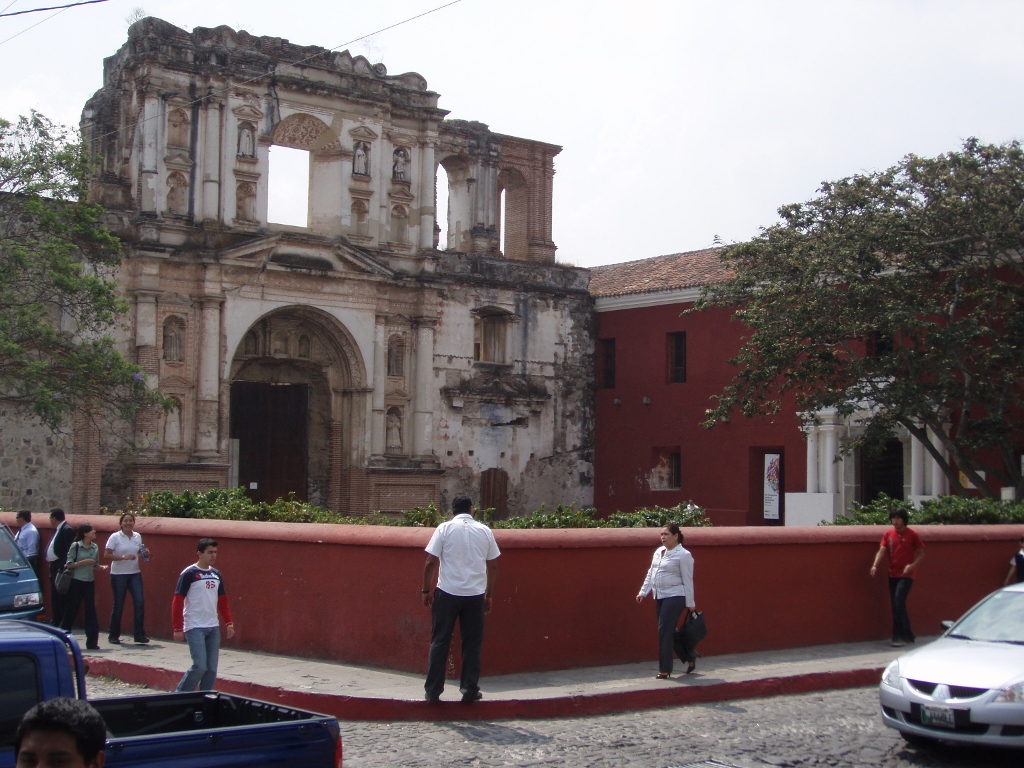 Church of the Society of Jesus
Church of the Society of Jesus
Needless to say, Antigua follows the urban plan that is typical of Spanish colonies and thus there is a main plaza of square shape, while the streets are laid down in a regular pattern following the north-south and the east-west orientations and crossing one another at a right angle. Thus, a few streets farther from the Church of the Society of Jesus I reached the Main Square (Plaza Mayor) with the Central Park (Parque Central).
To start with, I walked under the arcades that exist around this square and that are exceptionally beautiful and certainly very picturesque.
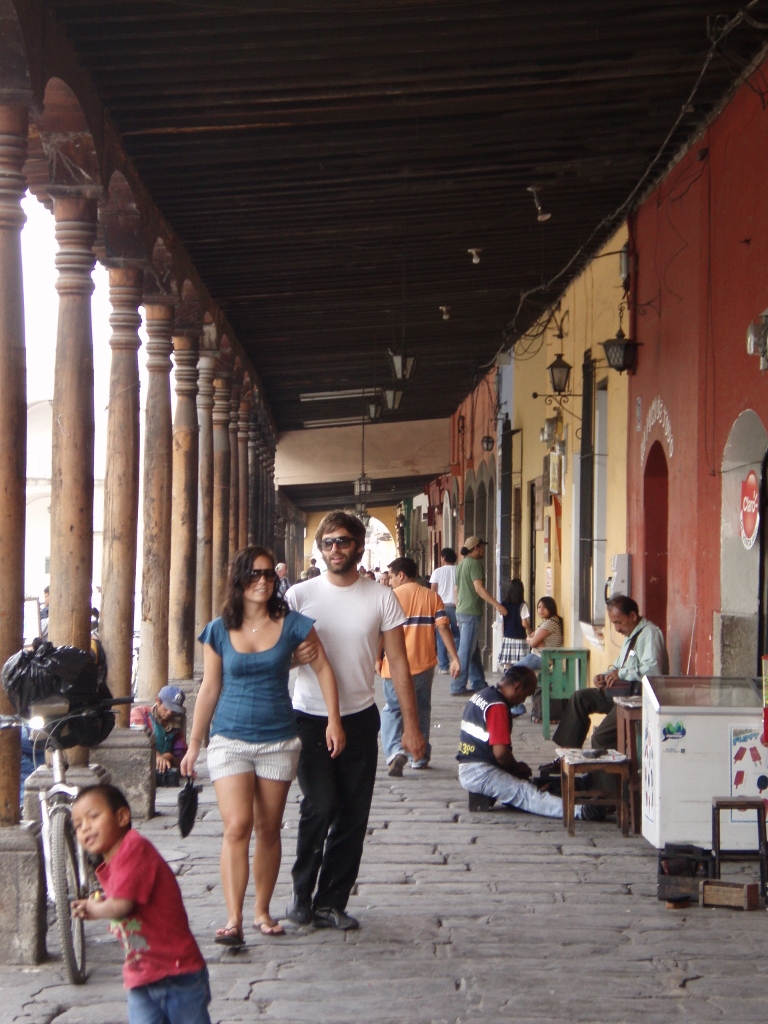 Arcade in Antigua
Arcade in Antigua
And then, looking across the middle of the square and through the Central park, through the trees I saw the Cathedral.
 Fountain in the Central Park and the Cathedral
Fountain in the Central Park and the Cathedral
I walked through the park in order to get closer to the Cathedral and see it a little better. The original cathedral was built in the 1540’s, but since then Antigua has been hit by numerous earthquakes and thus the cathedral regularly had additions made, only to be destroyed and reconstructed again. Also, since after the big earthquake of 1773 the authorities decided to move the capital of colonial Guatemala to what is nowadays Guatemala City, they took not only the building material from here, but certainly also the accessories for the religious service. All in all, although impressive facades of numerous churches may be seen today in this small town, they certainly have not recaptured the glory they used to have back in the day. Moreover, it is interesting that actually nothing has remained of the Cathedral that still has this impressive baroque facade. Behind the facade are ruins. There is one restored and functional chapel dedicated to St. John and so the cathedral is often called St. John’s Cathedral (Catedral de San José).
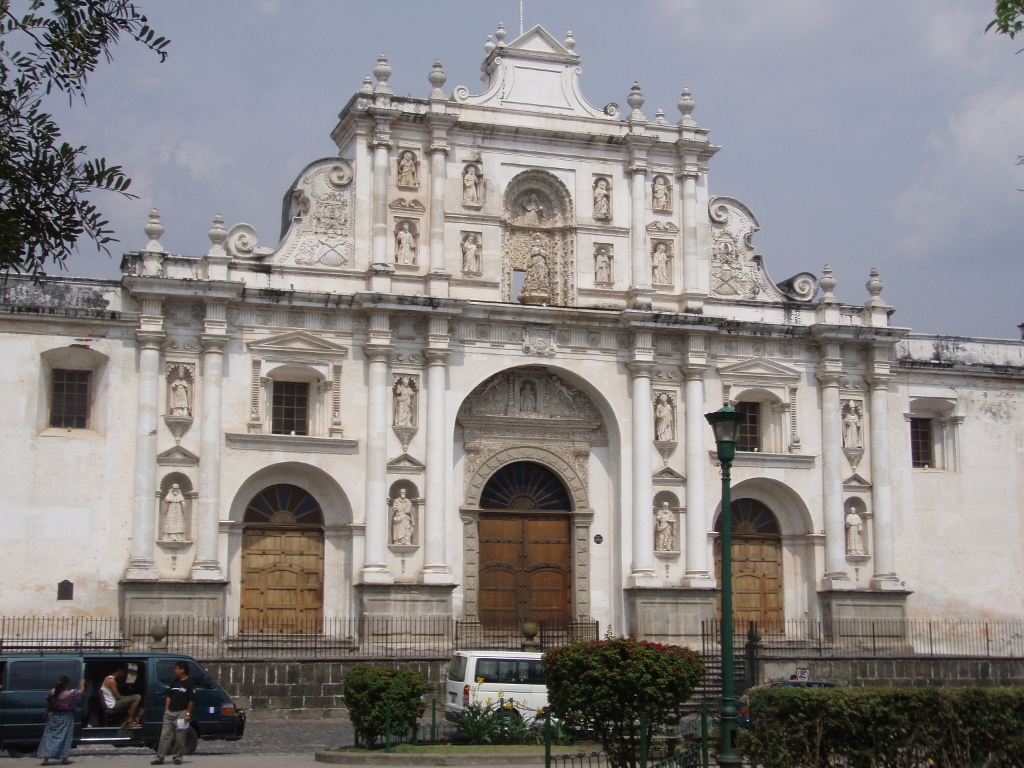 Cathedral in Antigua
Cathedral in Antigua
As I was already in the Central Park, I looked back again at the fountain that I had previously only walked by. This is the famous baroque Mermaid Fountain built in 1737 by Diego de Porres, the most famous architect in Guatemala at the time, which was placed in the Central Park two years later.
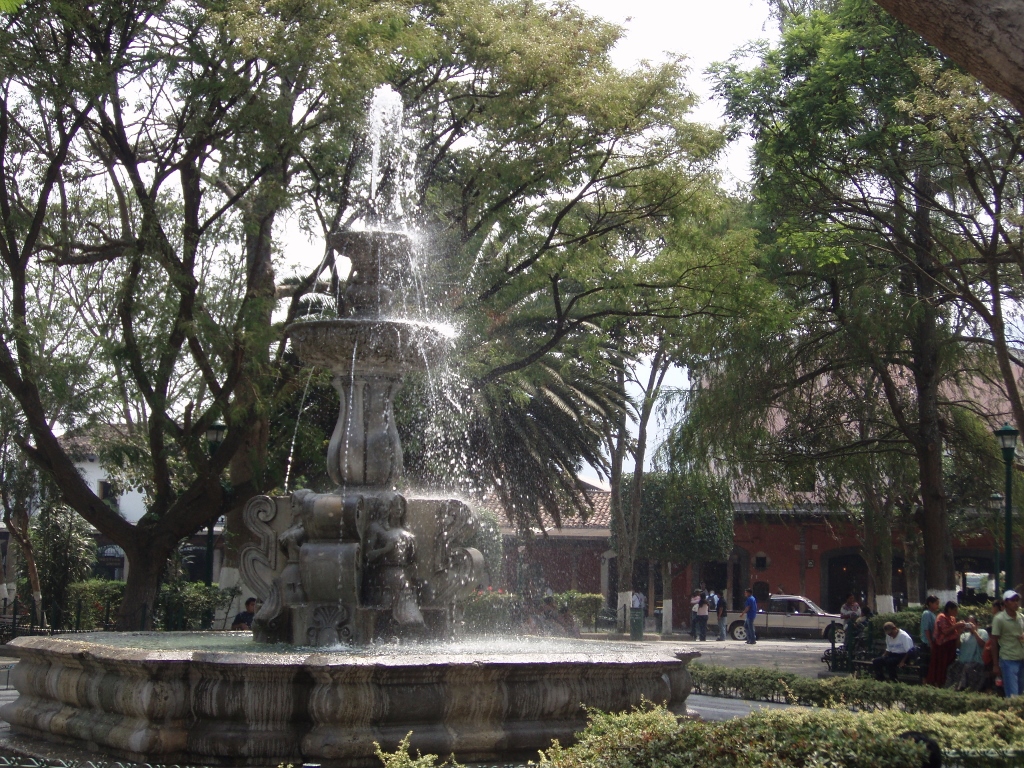 Mermaid Fountain
Mermaid Fountain
On the north side of the square there is the Town Hall called Ayuntamiento here. In this place, originally there used to be a significantly smaller building, but the construction of a new, bigger edifice that may be seen today was completed in 1743. In vain, for only three decades later this building was destroyed as well. It was restored in 1853.
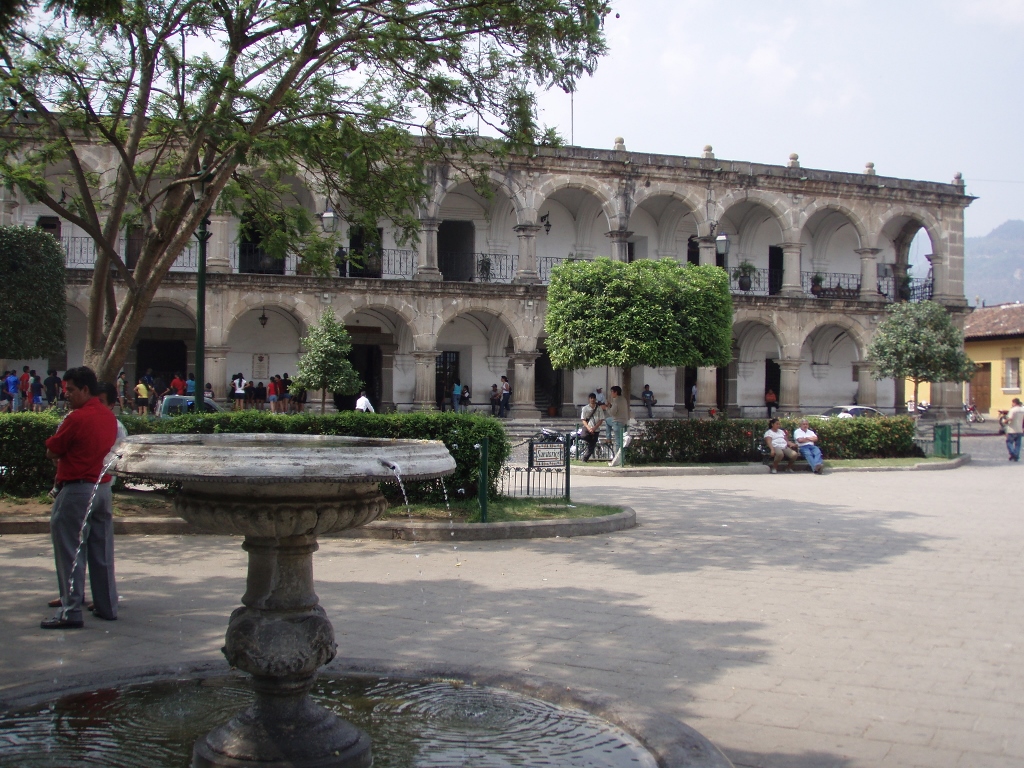 Town Hall in Antigua
Town Hall in Antigua
Then I simply turned back and went to the opposite side of the Central park from where I could see a building that used to be the residence of the representative of the King of Spain and that is the Captain General Palace (Palacio de los Capitanes Generales).
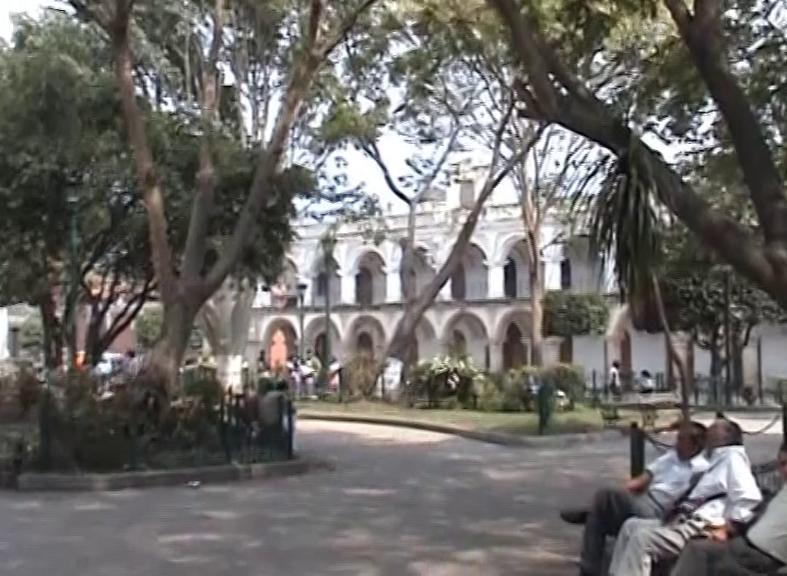 Captain General Palace as seen through the Central Park
Captain General Palace as seen through the Central Park
The construction of the first two-storey building started in this place in 1558. It was from here that the General Captaincy of Guatemala, which was a part of the administrative division of the Spanish Empire, was ruled. Because of a couple of earthquakes from 1717 and 1751 that damaged the building it was restored and then it got its final form in the period from 1755 to 1764. And then came the disastrous 1773 earthquake after which the capital was moved. In order to build the new capital, it was ordered that all the construction material that could be moved should be moved to Guatemala City and thus all the doors, windows, balconies, decorations, etc. were taken away from this edifice. The building was restored in 1890 after all, but only few of its parts are original, i.e., from the period before 1773.
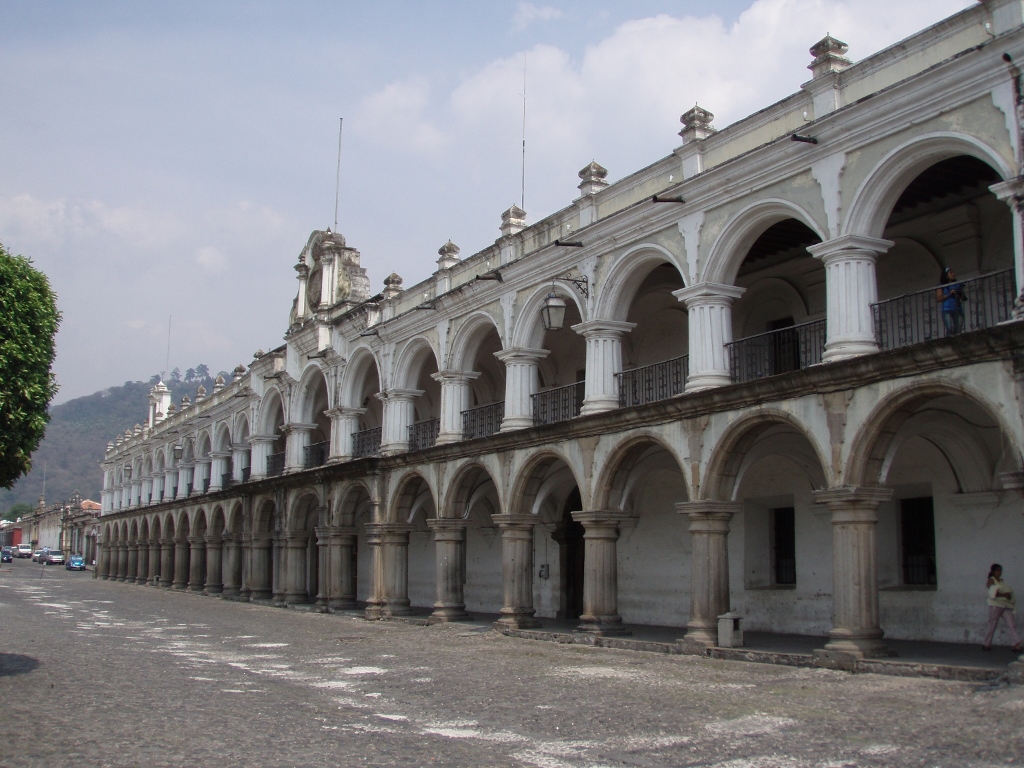 Captain General Palace
Captain General Palace
Nowadays it hosts different offices. When one looks towards its central courtyard, one can also see nicely the cobbled street in front of the palace.
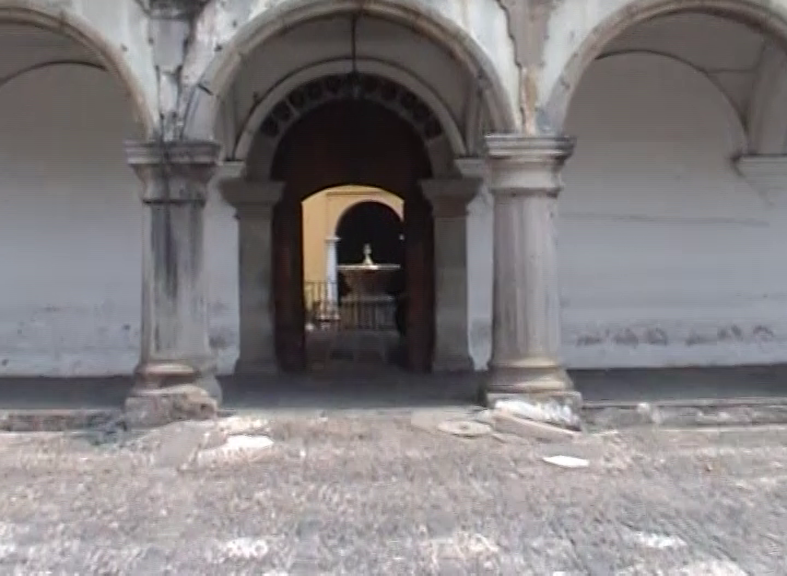 Captain General Palace and the cobbled street in front of it
Captain General Palace and the cobbled street in front of it
Generally speaking, all of Antigua has cobbled street and this only goes to accentuate even more its romantic, antique appearance. In addition, the passages, i.e., the arcades are also paved in large dressed stones.
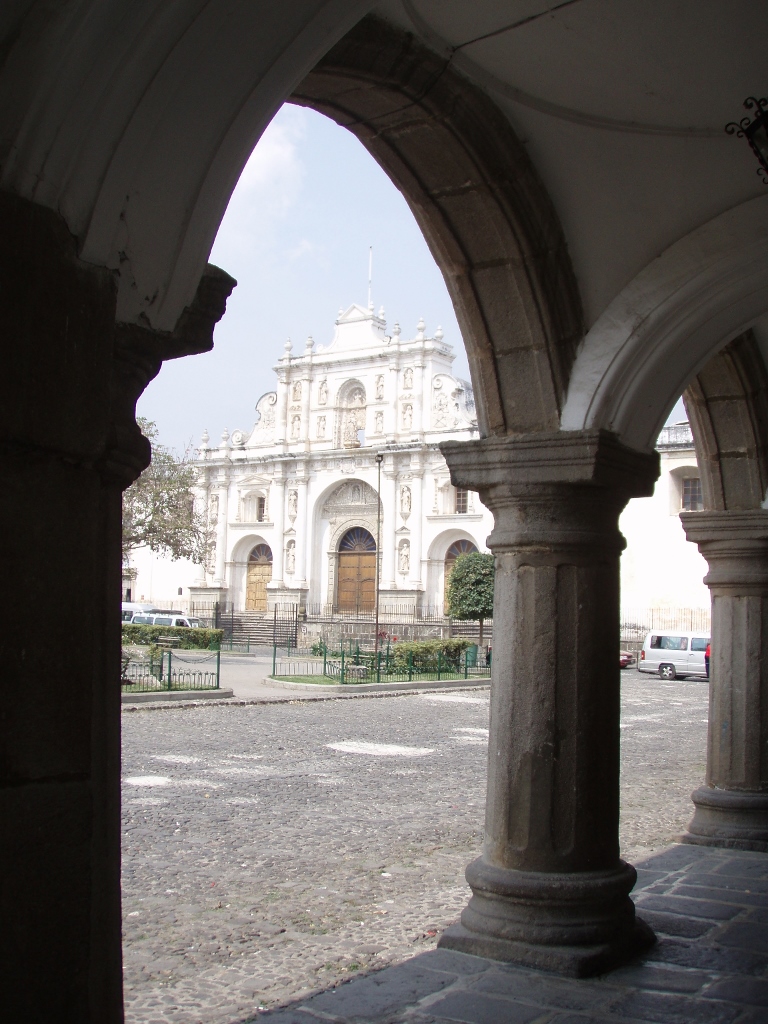 View at the Cathedral from the arcade of the Captain General Palace
View at the Cathedral from the arcade of the Captain General Palace
Then I continued with my sightseeing of Antigua and not far from the Main Square I got to the building of the Colonial Art Museum (Museo de Arte Colonial), which used to be the building of the University of San Carlos de Guatemala. The university was founded in 1676 and this was the first university in Central America. However, at first it used to be situated in another building and was moved here in 1763 when the main building of the present-day museum was first built. The history of the university within this building, like in the case of all other structures, lasted until the 1773 earthquake. However, it is interesting that this concrete building did survive the earthquake. This is attributed to its thick columns, as well as the binder used in its construction – sand, honey, milk, egg whites and water!
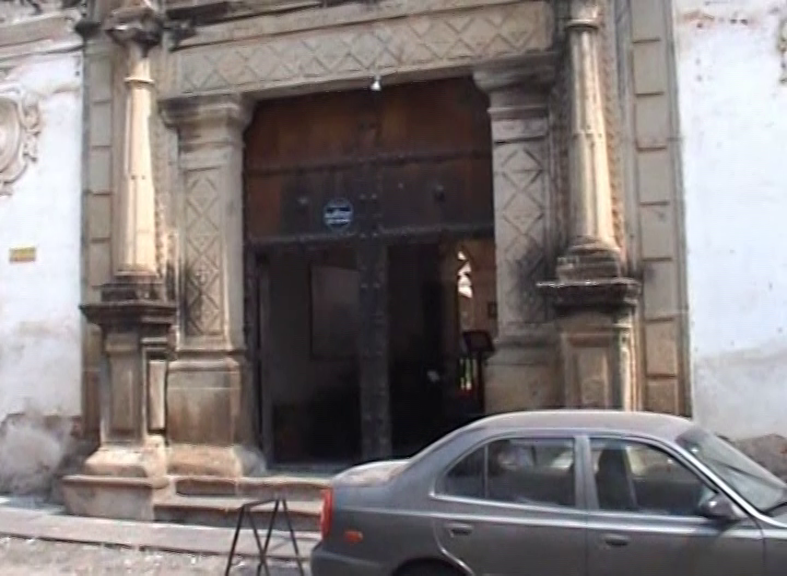 Entrance into the Colonial Art Museum
Entrance into the Colonial Art Museum
Still, the main reason why I got here was not the museum itself (which was opened in this building in 1936) or the study of the composition of the building cement, but rather the Mudéjar art style applied in the construction of this edifice that may be seen particularly well in the paved patio.
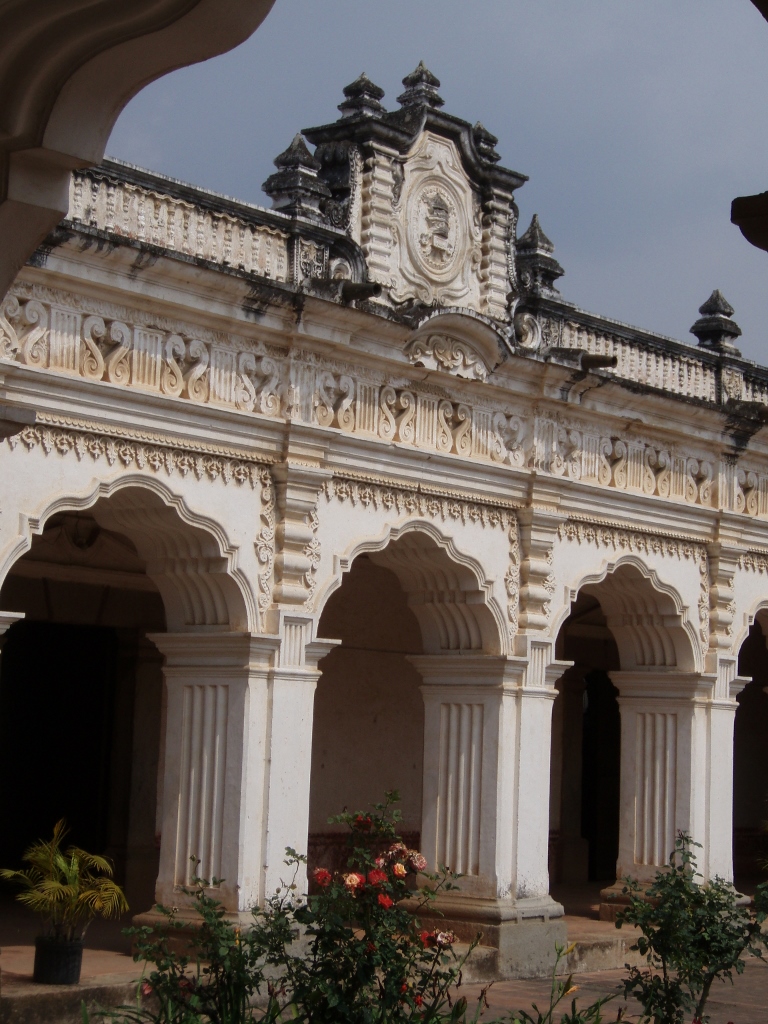 Colonial Art Museum, the former University of San Carlos de Guatemala
Colonial Art Museum, the former University of San Carlos de Guatemala
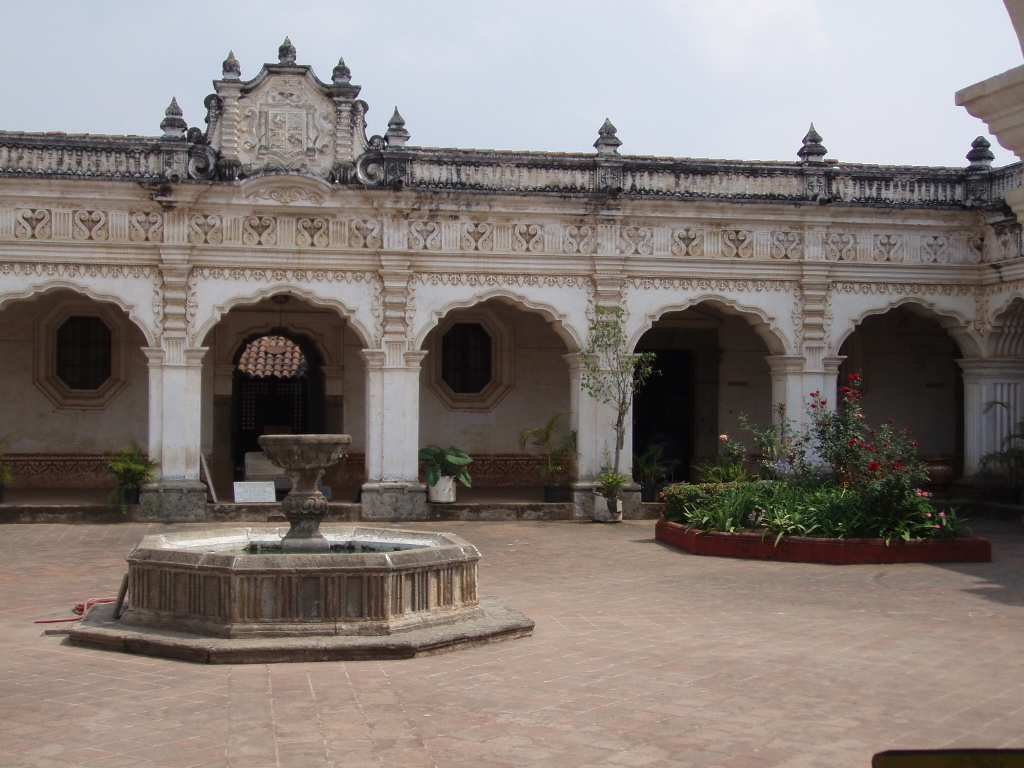 Colonial Art Museum, patio with a fountain
Colonial Art Museum, patio with a fountain
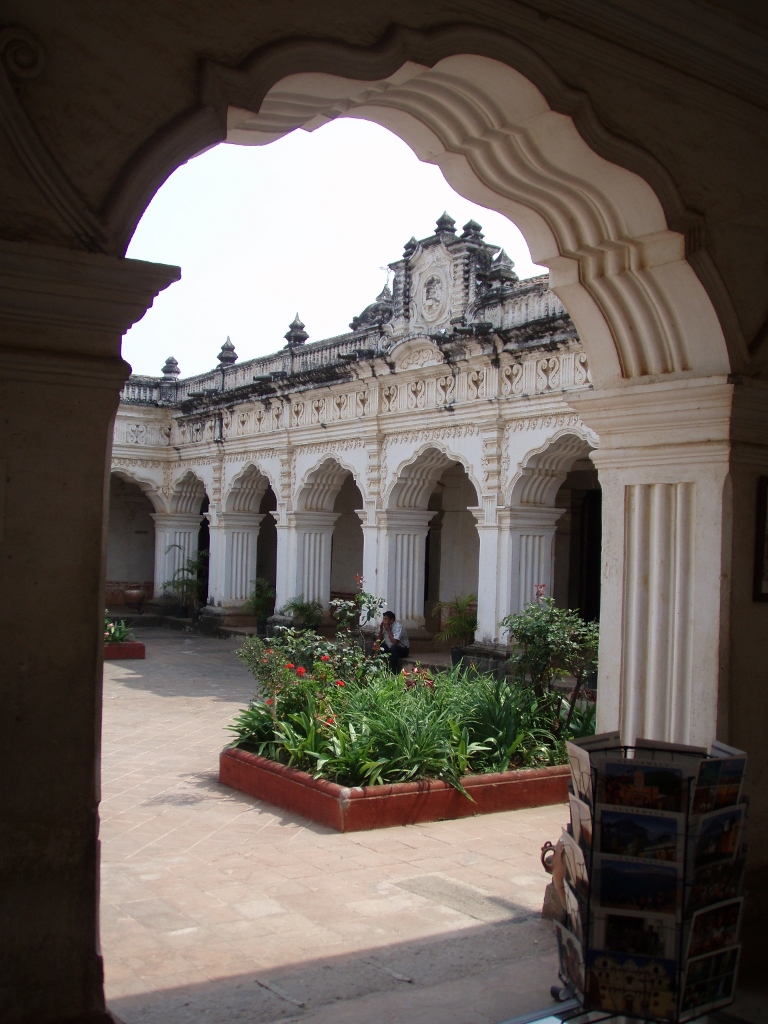 Colonial Art Museum
Colonial Art Museum
While I was taking photos, I chatted nicely with a man who worked there. Generally speaking, my impression was that the Guatemalans are exceptionally nice and kind people. I was left with this impression until the very end of my journey, but this does not refer only to the Guatemalans, but rather I kept encountering nice people everywhere I went and I thoroughly enjoyed all of these contacts.
After this short stay in the entrance area of the museum I continued with my walk and so I reached La Union Park (Parque la Unión) which is considered to be one of the most picturesque in Antigua.
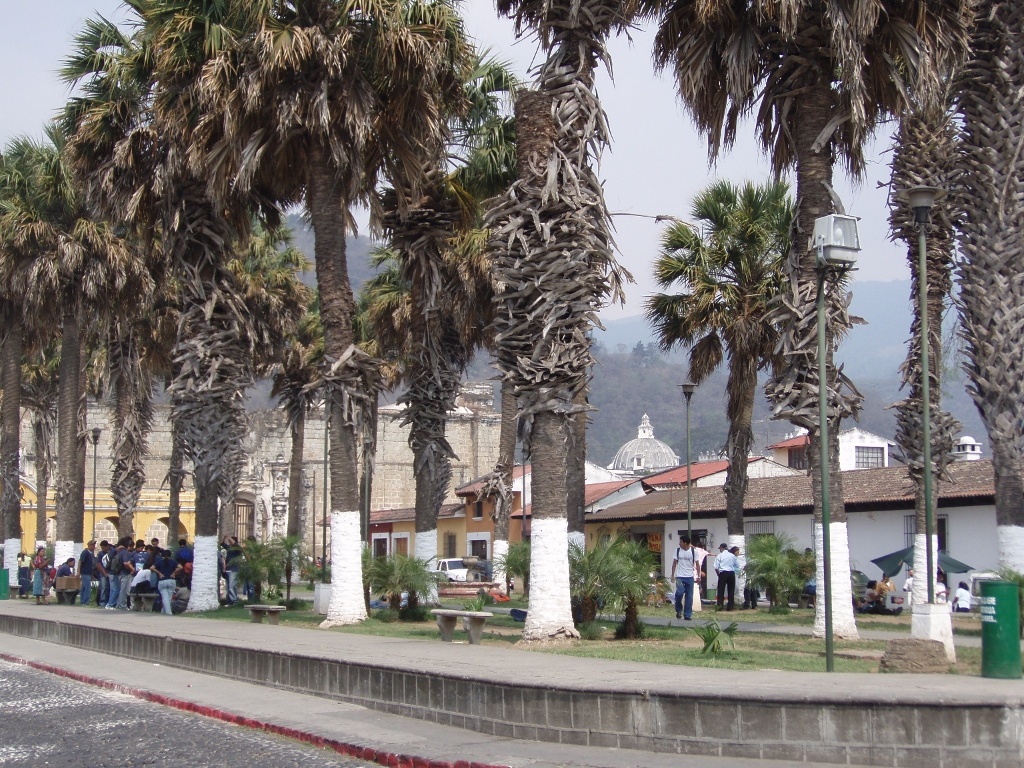 La Union Park
La Union Park
Among other things, in the park there is a rather large water tank built here that has been used since the colonial times for women to wash their laundry. During my walk I was more concentrated on the monastery that is located at the square and so I took a photo of this tank that is also called La Union (Tanque la Unión) only from afar.
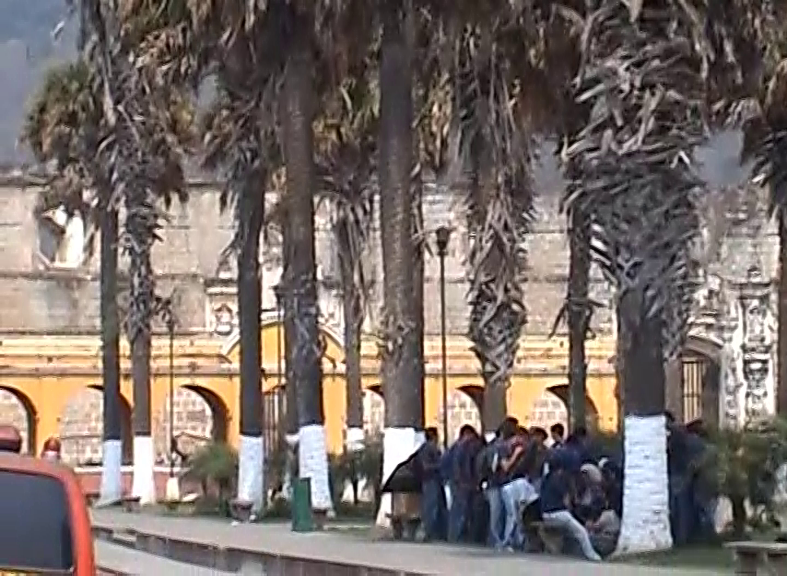 La Union Tank is the yellow structure that can be discerned behind the palm trees
La Union Tank is the yellow structure that can be discerned behind the palm trees
In the photo above, behind the yellow water tank, it is possible to see a pale glimpse of the front facade of the Convent of Santa Clara (Convento Santa Clara) and so I got to the street in front of the convent.
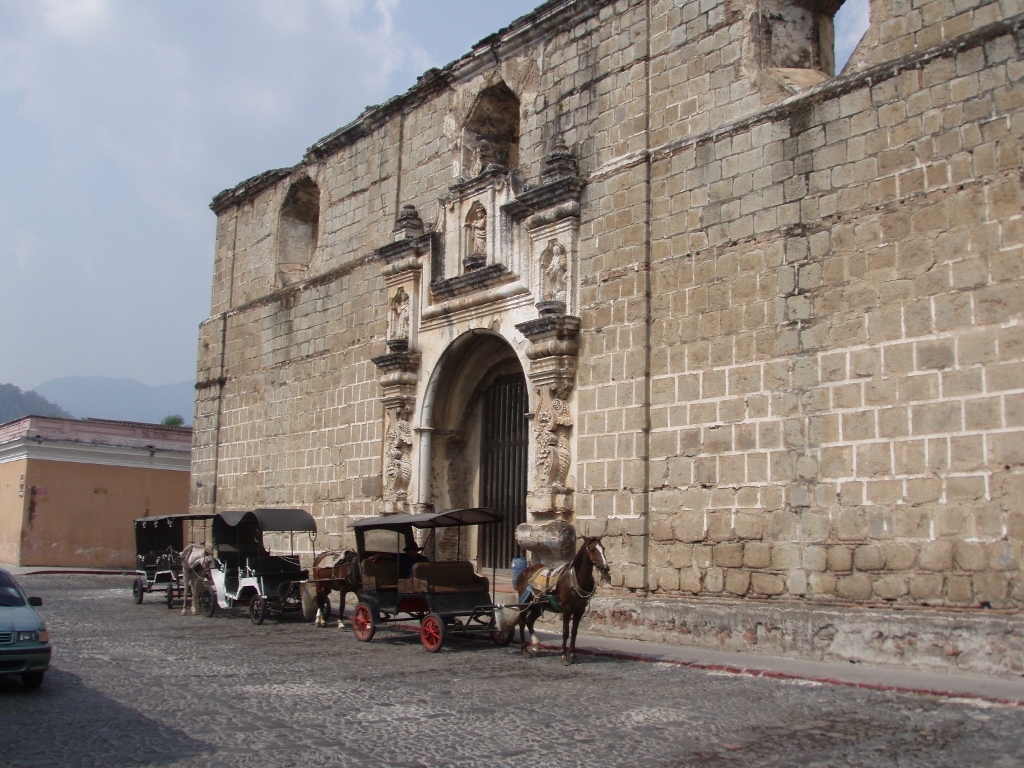 Front facade of the Convent of Santa Clara
Front facade of the Convent of Santa Clara
The monastery was built in 1699, but it was damaged in the earthquakes of 1717 and 1773, as well as during the 1976 earthquake. All in all, within the monastery there are only ruins now, but the front facade that is considered to be a masterpiece of Baroque architecture has survived nicely. The convent itself, i.e., the space with the ruins can be entered through the gate of the neighbouring building which is a part of the convent.
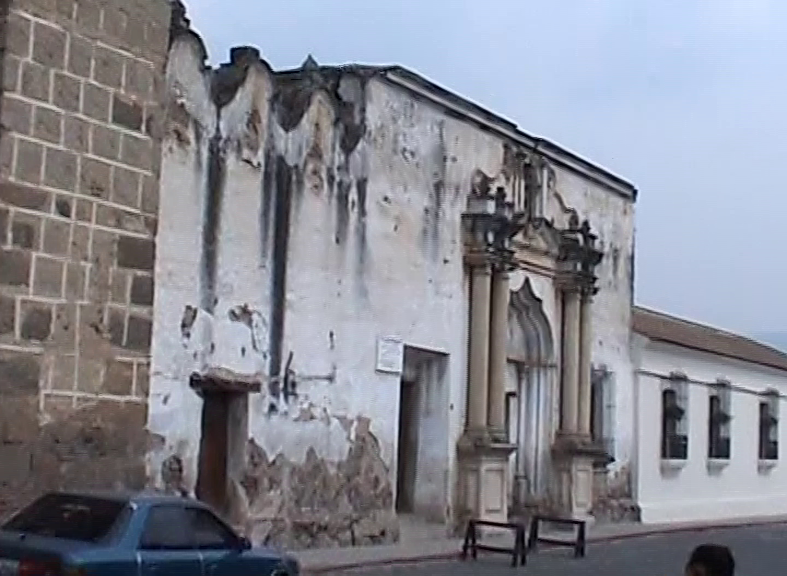 Entrance into the Convent of Santa Clara
Entrance into the Convent of Santa Clara
The guidebook I was using said that in addition to the ruins it was also very peaceful inside and that the walk in this area was certainly pleasant. However, the thing was that if you want to visit each one of these buildings you would have to pay an entrance ticket to each place separately, plus an addition for the use of a photo camera and another fee for using a video camera. I have already mentioned several times that I had a rather limited budget during this journey, so paying for tickets to enter each church or any other building, even without taking photos and filming, was absolutely out of question. I contended myself by visiting it all from the outside. And that was not a bad thing either, for Antigua is an exceptionally pretty and picturesque place.